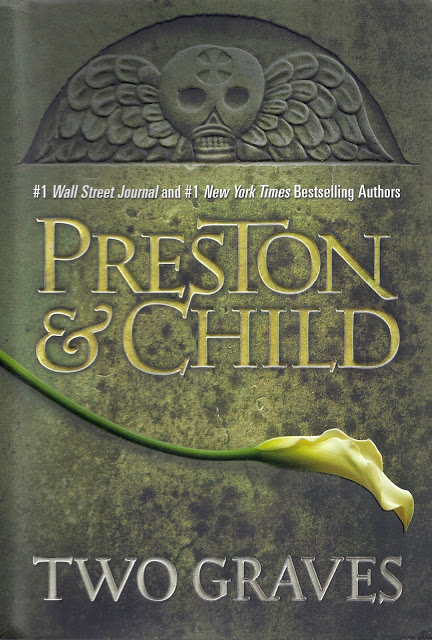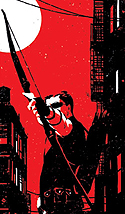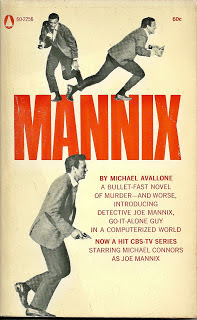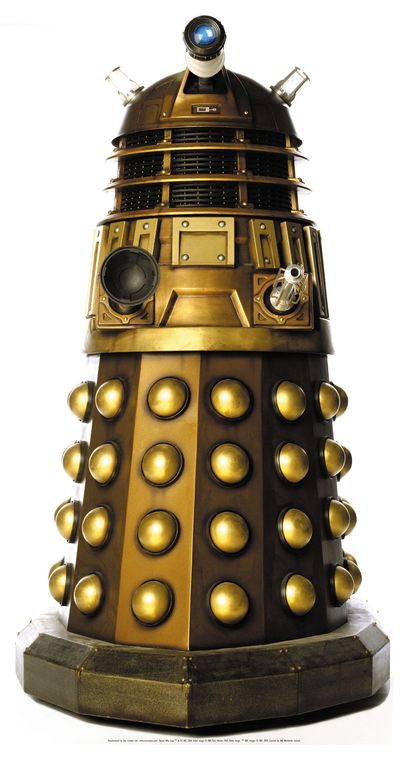FORTIER TAKES ON’ TWO GRAVES’ FROM PRESTON AND CHILD!


All my life, though some have changed
Some forever not for better
Some have gone and some remain.”
– The Beatles, In My Life
As I grow older, I find some underlying conservative strains in me coming out –much as that will surprise many who know me as a flaming leftie. While not totally adverse, I find I’m resistant to change the older I get. I like things as they were. When I periodically go back to my hometown of Chicago, I find some things have changed and some things are just gone. My first reaction generally is “Who told them they could do that?” Even if I haven’t been back to a place in some time, I mildly resent it not being there. I see what is now there overlaid with my memory of what was there. A cognitive double vision, if you will.
I think part of the reason that young people may not have that same reaction is they don’t have the same amount of experience with that spot. They’re living in it now and maybe know it only from now. Current chronology doesn’t get mixed with past chronology as it does for those of us who are older.
All of which brings us to the news this week of the Comics Buyer’s Guide ending its long run in about two months. For those of you who don’t know, CBG was long one of the top comics related newspapers/magazines with news and reviews and opinion columns relating to the comics medium.
There are other places that have covered the history of the Comic Buyers Guide, including an excellent summation by Bob Greenberger here on ComicMix. What I want to talk about instead is my own personal connections and history with it.
Before I was a writer of comics, I was a fan and with the dawning of the direct sale shops came the discovery of periodicals such as The Comics Reader and CBG. For the first time, I got a peek into the backstage of the comics industry. I got an idea of what was coming out and when, who were the artists or writers on what books, I read reviews, letters from fans and pros, opinions and columns (notably Peter David) and, as a fan and someone who had aspirations for the field, I wanted not only to read CBG, I wanted to be in it, to be one of those who were talked about.
Eventually, I was. I had arrived. I was part of it. I got reviewed by Don Thompson (he and his wife, the ever charming Maggie, ran the paper). While he didn’t like everything I did, I felt he was fair and reasonable and he gave one of my favorite reviews of my character GrimJack. In one issue, Gordon the bartender tells a customer the “secret origin of John Gaunt.” It came down to “Mama Gaunt, Papa Gaunt, a bottle of hootch, wucka wucka, wucka – nine months later, Baby Gaunt.” Don said it was his second favorite origin in all of comics, eclipsed only by Superman. I loved that and still do. Thanks, Don.
The most important memory of CBG for me is that, for a time, they gave my late wife Kimberly Yale a literary home. Kim wrote a column for them and, as she learned she had cancer, she recounted her battle with it until close to her death. Kim was a finer writer than me; I’m a storyteller, not a Fine Writer. Oh, I know my way around structure and theme and character and syntax and so on but my primary focus was and is storytelling. For Kim, it was the shape of the sentence, the right word chosen, the proper use of grammar and syntax. I’ll split infinitives without a care but Kim didn’t like that. She was the better essayist than myself. CBG gave her the chance to make her mark that way.
I’ll freely admit I haven’t read CBG for a while. I’m more online these days. I liked, however, knowing it was there and now it won’t be. Life changes, I know, and some things die but life itself always goes on even if I don’t always approve.
Drat.
MONDAY: Mindy Newell
 It’s the end of the year, so it’s time for still another mindless list of favorites – maintaining a cloying, egotistical annual tradition throughout the media. Once again, here are my self-imposed rules: I’m only listing series that either were ongoing or ran more than six issues, I’m not listing graphic novels or reprints as both compete under different criteria, I’m not covering Internet-only projects as I’d be yanking the rug out from under my pal Glenn Hauman, and I’m listing only nine because tied for tenth place would be about two dozen other titles and I’ve only got so much bandwidth. Besides, “nine” is snarky and when it comes to reality, I am one snarky sumbytch – but only for a living. On Earth-Prime, I’m really a sweet, kind, understanding guy.
It’s the end of the year, so it’s time for still another mindless list of favorites – maintaining a cloying, egotistical annual tradition throughout the media. Once again, here are my self-imposed rules: I’m only listing series that either were ongoing or ran more than six issues, I’m not listing graphic novels or reprints as both compete under different criteria, I’m not covering Internet-only projects as I’d be yanking the rug out from under my pal Glenn Hauman, and I’m listing only nine because tied for tenth place would be about two dozen other titles and I’ve only got so much bandwidth. Besides, “nine” is snarky and when it comes to reality, I am one snarky sumbytch – but only for a living. On Earth-Prime, I’m really a sweet, kind, understanding guy.
Having said all that, let’s open that hermetically sealed jar on the porch of Funk and Wagnalls and start.
1. Manhattan Projects. If I had to write a Top 9 of the Third Millennium list, I’d be hard pressed not to include this title. It’s compelling, it’s different, it’s unpredictable and it’s brilliantly executed by writer Jonathan Hickman and artist Nick Pitarra. It turns out the scientists and the military leaders behind the creation and the execution of the Atomic Bomb had a lot more in mind than just nuking Japan… a lot more. And their plans run decades longer than World War II. Based largely upon real-life individuals who are too dead to litigate, each person seems to have his own motivations, his own ideas for execution, and his own long-range plan for how to develop the future. Yet the story never gets bogged down in political posturing or self-amusing cuteness – the latter being a real temptation for many creators. Each issue gives us the impression there’s more than meets the eye; each successive issue proves there most certainly was. If the History Channel spun off a Paranoia Network, Manhattan Projects would be its raison d’être.
 2. Hawkeye. If you’ll pardon the pun, Hawkeye has never been more than a second-string character. An interesting guy with an involving backstory and enough sexual relationships to almost fill a Howard Chaykin mini-series, this series tells us what Clint Barton does when he’s not being an Avenger or a S.H.I.E.L.D. camp follower. It turns out Clint leads a normal-looking life that gets interfered with by people who think Avengers should be Avengers 24/7. He’s also got a thing going with the Young Avenger who was briefly Hawkeye. Matt Fraction and David Aja bring forth perhaps the most human interpretation of a Marvel character in a long, long while. Hawkeye might be second-string, but Clint Barton most certainly is not.
2. Hawkeye. If you’ll pardon the pun, Hawkeye has never been more than a second-string character. An interesting guy with an involving backstory and enough sexual relationships to almost fill a Howard Chaykin mini-series, this series tells us what Clint Barton does when he’s not being an Avenger or a S.H.I.E.L.D. camp follower. It turns out Clint leads a normal-looking life that gets interfered with by people who think Avengers should be Avengers 24/7. He’s also got a thing going with the Young Avenger who was briefly Hawkeye. Matt Fraction and David Aja bring forth perhaps the most human interpretation of a Marvel character in a long, long while. Hawkeye might be second-string, but Clint Barton most certainly is not.
3. Captain Marvel. Another second-string character. Despite some absolutely first-rate stories (I’m quite partial to Jim Starlin’s stuff, as well as anything Gene Colan or Gil Kane ever put pencil to paper), the guy/doll never came close to the heritage of its namesake. This may have changed. A true role model for younger female readers and a very military character who uniquely humanizes the armed forces, Carol Danvers finally soars under writer Kelly Sue DeConnick and artist Dexter Soy – both as a superhero and as a human being. DeConnick doesn’t qualify as “new” talent, but this certainly is a breakthrough series that establishes her as a truly major player… as it does Marvel’s Captain Marvel.
4. Creator-Owned Heroes. Anthology comics are a drag upon the direct sales racket. They almost never succeed. I don’t know why; there’s usually as much story in each individual chapter as there is in a standard full-length comic. I admire anybody who choses to give it a whirl (hi, there, honorary mention Mike Richardson and company for Dark Horse Presents!), and I really liked Creator-Owned Comics. Yep, liked. It’s gone with next month’s eighth issue. But this one was a lot more than an anthology comic: it had feature articles, how-to pieces, and swell interviews. The work of Jimmy Palmiotti, Justin Gray, Steve Niles, Steve Bunche and a cast of dozens (including swell folks like Phil Noto and Darwin Cooke), there wasn’t a clinker in the bunch. I wouldn’t mind seeing follow-ups on any of the series featured in this title, although I must give a particular nod to Jimmy and Justin’s Killswitch, a take on modern contract killers, and on Steve’s work in general. This is no light praise: I’m not a big fan of horror stories because most of them have been done before and redone a thousand times after that. Niles is quite the exception.
5. Batman Beyond Unlimited. Okay, this is a printed collection of three weekly online titles: Batman Beyond, Justice League Beyond, and Superman Beyond. But it comes out every month in a sweet monthly double-length printed comic, so it meets my capricious criteria. Based upon the animated DC Universe (as in, the weekly series Batman Beyond and Justice League, and to a lesser extent others), these stories are solid, fun, and relatively free of the angst that has overwhelmed the so-called real DCU stories. Yeah, kids can enjoy them. So can the rest of the established comics audience. Pull the stick out of your ass; there’s more to superhero comics than OCD heroes and death and predictable resurrection. These folks have just about the best take on Jack Kirby’s Fourth World characters than anybody since Jack Kirby. That’s because Jack remembered comics are supposed to be entertaining. Honorable mention: Ame-Comi Girls. It’s based on a stupid (but successful) merchandising idea but it’s just as much fun as anything being published today.
 6. Batgirl. O.K. The real story here is that DC Comics mindlessly offed writer Gail Simone from this series only to restore her within a week or so after serious (and occasionally, ah, overly dramatic) protest from both the readership and the creative community. But there was good reason: Gail took a character who was in an impossible situation and, against all tradition, put her back in the costume without resorting to ret-con or reboot, which have been the handmaidens of the New 52. She brought Barbara Gordon back to action with all the doubts, insecurities and vulnerabilities one would expect a person in her position to have, and she does so in a compelling way exercising all of her very considerable talent. This title thrives despite being engulfed in two back-to-back mega-non-events that overwhelmed and undermined all of the Batman titles.
6. Batgirl. O.K. The real story here is that DC Comics mindlessly offed writer Gail Simone from this series only to restore her within a week or so after serious (and occasionally, ah, overly dramatic) protest from both the readership and the creative community. But there was good reason: Gail took a character who was in an impossible situation and, against all tradition, put her back in the costume without resorting to ret-con or reboot, which have been the handmaidens of the New 52. She brought Barbara Gordon back to action with all the doubts, insecurities and vulnerabilities one would expect a person in her position to have, and she does so in a compelling way exercising all of her very considerable talent. This title thrives despite being engulfed in two back-to-back mega-non-events that overwhelmed and undermined all of the Batman titles.
7. Orchid. I praised this one last year; it comes to an end with issue 12 next month. That’s because writer/creator/musician/activist Nightwatchman Tom Morello has a day job and the young Wobblie still has a lot of rabble to rouse. Orchid is a true revolutionary comic book wherein a growing gaggle of the downtrodden stand up for themselves against all odds and unite to defeat the omnipresent oppressor. Tom manages to do this without resorting to obvious parallels to real-life oppressors, although the environment he creates will be recognizable to anybody who thinks there just might be something wrong with Fox “News.” But this is a comic book site and not the place for (most of) my social/political rants (cough cough). Orchid succeeds and thrives as a story with identifiable, compelling characters and situations and a story that kicks ass with the energy and verve one would expect from a rock’n’roller like Morello.
8. Revival. A somewhat apocalyptic tale about people who come back from the dead in the fairly isolated city of Wausau Wisconsin (I’ve been there several times; it is a city and it is indeed fairly isolated). But they aren’t zombies. Most are quite affable. It’s the rest of the population that’s got a problem. The latest output from Tim Seeley and my landsman Mike Norton, two enormously gifted talents. Somewhere above I noted how Steve Niles is able to raise well above the predictable crap and that is equally true here: the story and formula is typical, but the execution is compelling. That I’ve been a big fan of Norton’s is no surprise to my friends in Chicago.
9. Nowhere Men. I’ve got to thank my ComicMix brother Marc Alan Fishman for this one. Admittedly, it’s only two issues old and it has its flaws – long prose insertions almost always bring the pace of visual storytelling to a grinding halt – but the concept and execution of this series far exceeds this drawback. Written by Eric Stephenson and drawn by Nate Bellegarde and Jordie Bellaire, the catch phrase here is “Science Is The New Rock ‘N’ Roll.” Four guys start up a science-for-the-people company and that’s cool, but twenty years later some have taken it too seriously, others not seriously enough, and things got a little out of hand. Sadly, I’m not certain who understands that, other than the reader and one of the major characters. Science is the new rock’n’roll, and exploring that as a cultural phenomenon makes for a great story – and a solid companion to Manhattan Projects.
Non-Self-Publisher of the Year: For some reason, I’m surprised to say it’s Image Comics. They’ve been publishing many of the most innovative titles around – four of the above nine – all creator-owned, without going after licensed properties like a crack-whore at a kneepad sale.
No offense meant to either publishers or crack-whores; I said I’m really a sweet, kind, understanding guy.
THURSDAY: Dennis O’Neil
The 1990s “X-Men” cartoon holds a special place in the hearts of many a fan, but that theme song– great the first 50 times, but if you’ve ever been at a comic convention next to a dealer that had the thing playing on a loop, you wanted to tear down their booth with your teeth after an hour.
Anyway, the team of Kyle Roberts, Nathan Pope, Zach Zellar and Colin Nance have created their own take on the famous opening. Take a look:
[youtube]http://www.youtube.com/watch?v=GYPEgZ-nD6U[/youtube]
ALL PULP REVIEWS by Ron Fortier


This is a great book for fans of tv detectives and tie-ins. As a book all on its own, though, I’ve read better.
THREE OUT OF FIVE TIPS OF THE HAT-Enjoyable read, love the way Joe Mannix comes off the page. I just wish that there were real people populating the book around him, not cardboard cutouts.

Using the new Doctor Who Limited Edition Gift Set, your noble author will make his way through as much of the modern series as he can before the Christmas episode, The Snowmen.
Mr. Henry Van Staaten owns the Internet. He also has a museum of alien artifacts under Utah, including a Slitheen claw, a Cyberman head, and a…
DALEK
by Robert Shearman
Directed by Joe Ahearne
“Broken…broken…hair dryer…”
The TARDIS lands in 2012 (!) in Utah, or more precisely, under it. They’re in the personal horde of Henry Van Statten, an impossibly rich American who obtains alien artifacts, reverse engineers their technology, and sells it for profit. The Doctor picked up a distress call from his one living exhibit, a mysterious creature that Van Statten calls a Metaltron. Only when The Doctor sees it does he realize what it truly is – a Dalek, which somehow survived the Time War and fell back in time to Earth, damaged and alone. The Doctor immediately tried to destroy it, but Van Statten, not wanting his most valuable item damaged, stops him. But when Rose tries to reach out to the creature, touching it, the Dalek is able to user her DNA, charged with the energy of time travel, to restore its systems. In seconds it breaks free of his chains, absorbs the power grid of the western United States, and downloads the Internet, searching for information about his people. Finding nothing, it resorts to the primary command of all Daleks: exterminate.
Pretty much as soon as the new show was announced, questions came up as to when the Daleks would appear. The show was shot into the stratosphere once the Daleks appeared, and they’ve been linked inextricably ever since. The Daleks almost didn’t make it to the new series of Doctor Who, and it was all Steve Martin’s fault. When he was to appear in the film Looney Tunes: Back in Action, he insisted they include a Dalek in a madcap scene full of old movie aliens. He was a big fan of the series, and thought it’d be a nice tip of the hat. Permission was asked, but the estate of Terry Nation, who controls the rights to the characters, was not. This caused offense, so when the BBC asked to bring them back for the new series, the estate originally refused. When Steve Martin heard about it, he wrote a personal letter to the estate explaining the situation, and apologizing personally. This calmed everyone down, and the proper paperwork was signed to allow the characters to appear. But for about a month, Robert Sherman was forced to work on a draft of the script with another alien.
The new Dalek was designed to match the height of Billie Piper, so she could look it in the eye. Similarly, the New Paradigm Daleks were designed to match Karen Gillan’s eyeline. But in a recent interview on the BBC website, Steven Moffat wonders that making them too big was a mistake. “They’re scarier when they’re wee”, he says. The scene of the Dalek at the bottom of the stairs was a clear reference to the classic gag about not being able to climb stairs. But of course, in the original series, Daleks had found a fix for this long since. They had anti-gravity mats in Planet of the Daleks, but the big reveal in Remembrance of the Daleks as the Imperial Dalek slowly floats up the stairs was the scene that had fans laughing and squeeing.
Nicholas Briggs, the voice of the Daleks, got his start working on fan productions and the Big Finish audio dramas. He’s also provided voices for the Cybermen, the Nestene and the Judoon.
Eccleston played the episode as positively bloodthirsty. After several episodes of offering the aliens a chance to leave in peace, he does not hesitate to try to kill it. His rage at the Dalek, and later at Van Statten is a sight to see. Billie Piper has equally good scenes against the Dalek from the other side of the spectrum, trying to help the unstoppable tank who is trying to get the hang of feelings. This could have been a perfect final Dalek adventure, but as you’ll see, they’re far from gone.
There are a lot of parallels between this episode and the first of this season, Asylum of the Daleks. Both this Dalek and the tragic prisoner in Asylum are kept in chains, and both are more than a little conflicted by being a mix of human and Dalek. Both are capable of amazing destruction all on their own, even as far below the surface of their respective planets. The idea of human and Dalek hybrids has been a theme as far back as Evil of the Daleks, where The Doctor introduces a “Human Factor” into a number of Daleks to start a civil war between factions.
 WACO, TX – 12/5/12- iVerse Media and Top Cow are offering, for a limited time, free trial programs to help celebrate the recent relaunches of Witchblade, the Darkness and Artifacts. These three popular franchises recently kickstarted fan passions with new storylines. In order to continue to drive excitement, iVerse wants fans to be able to sample each of these series at no risk.
WACO, TX – 12/5/12- iVerse Media and Top Cow are offering, for a limited time, free trial programs to help celebrate the recent relaunches of Witchblade, the Darkness and Artifacts. These three popular franchises recently kickstarted fan passions with new storylines. In order to continue to drive excitement, iVerse wants fans to be able to sample each of these series at no risk.
“We’re thrilled to help spread the word on these exciting series,” said iVerse CEO Mike Murphey. “We like what Top Cow is doing and want to do whatever we can to help fans find out what which series they like best.”
Fans can use the codes below to get the issue for free:
Artifacts #14-22 Bundle = TCARB12
Darkness Bundle #101-107 = TCDRB12
Witchblade Bundle #151-161 = TCWRB12
Fans can just go to the “more” section in the ComicsPlus app, click on “redeem” and enter in these codes. But fans are encouraged to hurry, as this offer expires on March 5, 2013.